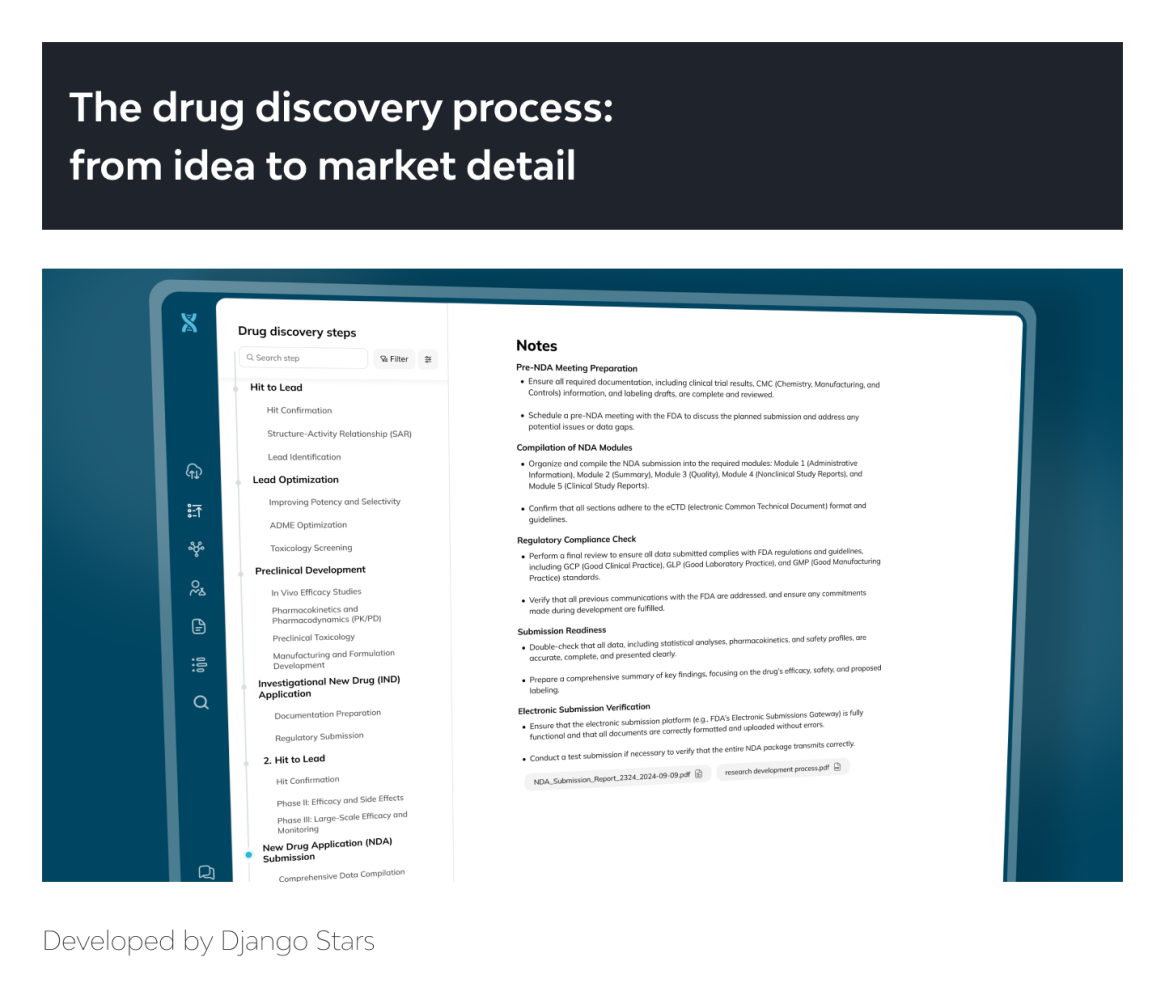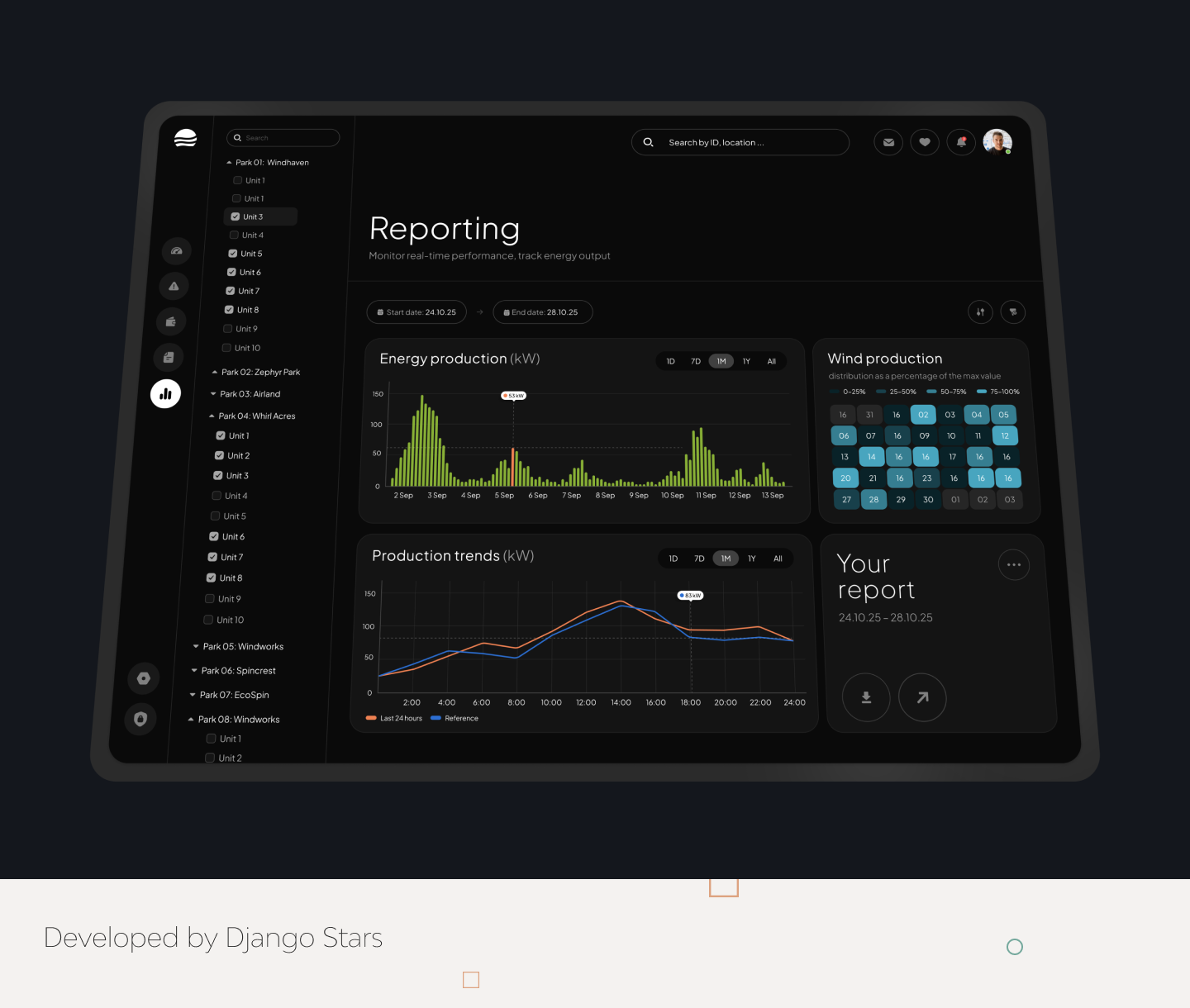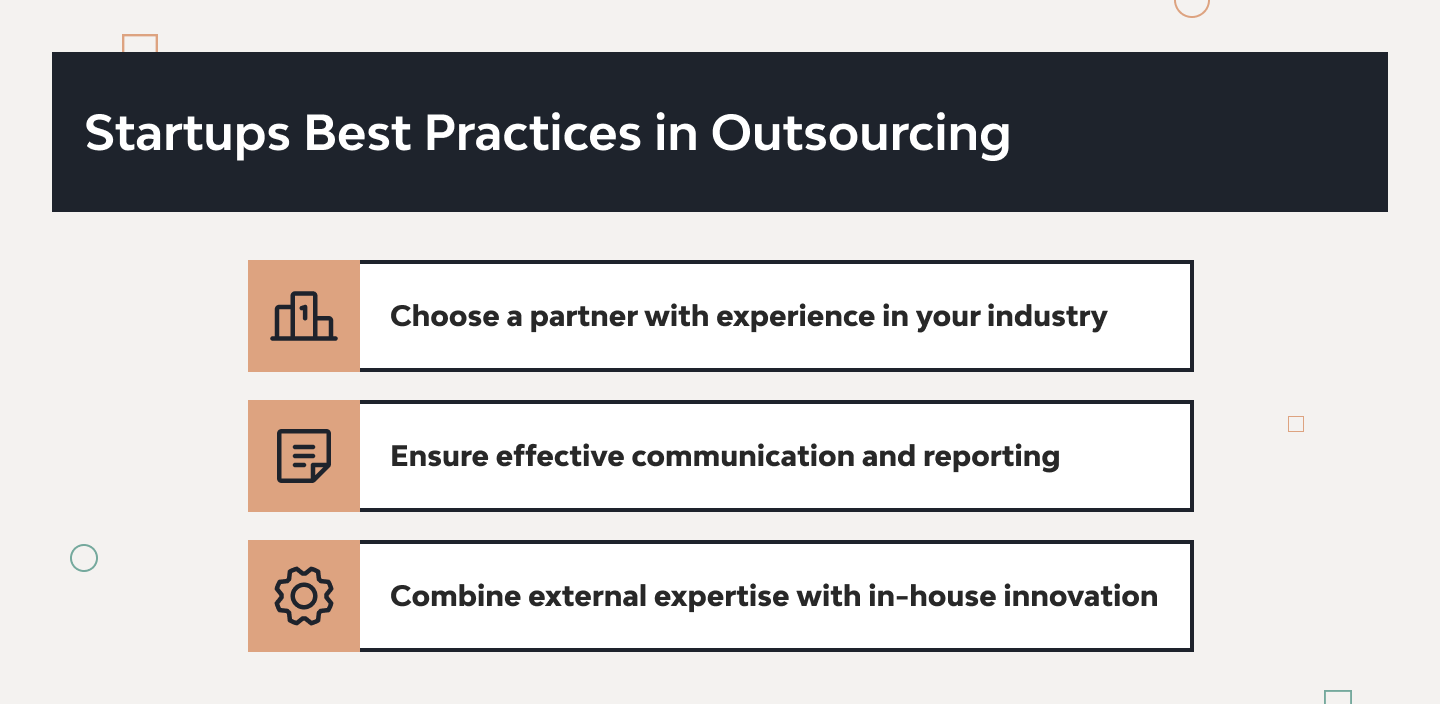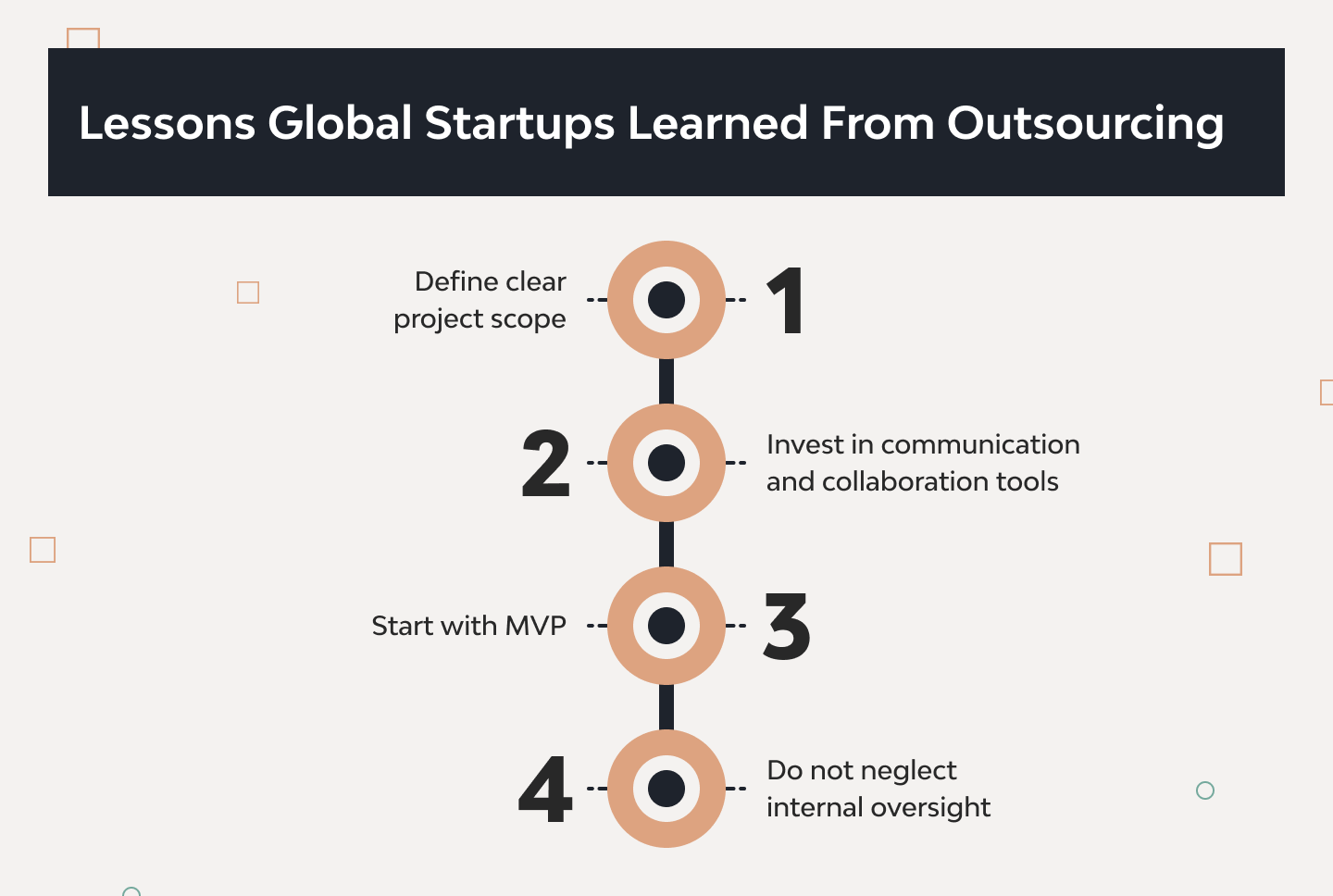Successful Startup Case Studies: Lessons Learned

We evolve through learning, and we evolve even faster when we learn from the examples of outstanding companies and businesses. If you are currently looking for a custom software development company for startups to develop your product, considering hiring an outsourcing team, or planning to launch your product, you’re in the right place. In this article, we will explore successful startup case studies and their approach to the development process, as well as review the benefits of IT outsourcing for startups.
The Strategic Role of IT Outsourcing in Startups
As a startup founder, managing everything on your own can quickly become overwhelming. You have to juggle the product, risks, budgets, quality, and market fit—all at once.
Here’s the recipe to ease that burden: a capable team. Yes, we’re talking about outsourcing. Your team is essential not only to make it all work but also to help you stay sane. Outsourcing allows you to save resources, tap into a pool of talented individuals from various countries with unique perspectives, and streamline your operations. While we’ve mentioned a few key points, let’s dive deeper into the major benefits of IT outsourcing for startups.
Cost-effectiveness
When in-house development requires extra costs for recruiting, infrastructure, benefits, and overheads, you pay only for the work done in outsourcing. In addition, you don’t spend time on hiring and supervision, so you can focus on the business and strategic tasks.
Flexibility
With IT outsourcing, you can choose the developer level and the pricing model that suits your project best. Also, you have the ability to quickly scale a team up or down depending on your requirements.
Accelerated time to market
Before the development process begins, outsourcing companies typically guide you through a product discovery phase with startup mentors. This stage includes creating a detailed product roadmap, defining technical requirements, and building a prototype that helps validate your idea and accelerate time-to-market. Among the key benefits of discovery phase are reduced development risks, more accurate cost and time estimates, and a clearer alignment between business goals and technical solutions. By investing in this stage, startups and enterprises alike can save resources in the long run and increase the likelihood of launching a successful product.
At Django Stars, we’ve taken this approach a step further by developing two innovative prototypes. One is a platform transforming drug discovery through the integration of DNA sequence analysis and 3D protein modeling—designed to accelerate medication development with exceptional targeting precision.
The other is a mobile wind turbine management platform, built to enhance monitoring and efficiency in the renewable energy sector.
Access to experts in different fields
With outsourcing, you can choose a vendor who specializes in your specific niche and knows all the ins and outs of developing a technical solution for your industry. This will help you avoid industry-specific pitfalls and develop a product that meets all the regulations and compliances of your target industry.
Our Success Stories: Startup Case Studies
We’d like to share our outsourcing expertise and the lessons we’ve learned from developing custom software for startups.
Diviac – a cloud-based travel platform for scuba divers
The Diviac team reached out to us with a ready design and business strategy, so our task was to develop a cross-platform product from the ground up. Diviac had an in-house design and business development team while we managed the entire development process.
Main goals
- Clean and migrate project data
- Develop a web application from scratch
- Establish an upgrade flow
Outcome and functionality
- Smart reporting tools that help users analyze their dive patterns, view statistics via the dashboard, customize it, and export
- The logbook also has an interactive map that allows users to mark places where they want to dive
- Advanced filtering by price, location, meal plan, services for divers, and wildlife sightings
- Booking and payment options
- Integration with 100+ dive computers
Client testimonial
Overall, I’m very positive about Django Stars, and I can recommend them without any problem. They’ve been very flexible in accommodating our needs, our desires. They’ve also been very responsive.
Joel Perrenoud
CEO of Diviac
Lessons learned
- Technology choice is essential for developing a scalable platform in a niche market
Illumidesk – US-based ed-tech platform that empowers instructors and educational institutions to deliver interactive content
Illumidesk reached out to us with a ready product – a notebook-based platform. However, they were not able to scale their product and extend functionality because of the tech stack limitations. Illumidesk needed a partner with tech expertise and Python development experience and could rewrite the existing architecture and redesign it to help the business scale.
Main goals
- Redesign the architecture of the platform
- Create advanced content management, analytics, and AI tools
- Create a scalable product with the potential to integrate with enterprise business
Outcome and functionality
- Designed an ultimate toolset for creating interactive courses with exercises, actionable code blocks, and non-coding assignments.
- Designed an assignment editor that allows the creation of multiple task types
- Introduced LTI and an opportunity to migrate learning data to the Illumidesk platform with files instantly
- Integrated Illumidesk with ChatGPT that covers the assignment code blocks with testing
- Designed a dashboard for instructors, admins, and learning groups
Client testimonial
Our initial pain points were scale. In order to operate as a true software-as-a-service company, we need to be multi-tenant. When we completed the discovery project with Django Stars, we found that those pain points would be resolved.
Greg Werner
Founder, Illumidesk
Lessons learned
- The discovery phase is essential to analyze the existing architecture and find a way to transform it into a more scalable one
- The discovery phase helps to align the vision and ensure that everyone stays on the same page
Sindeo – a mortgage app that helps clients find mortgages and lenders in the mortgage marketplace.
Sindeo answers any questions people may have about home financing regardless of where they are in the home purchasing process.
Main goals
- A customer came to us with the request to build and develop a platform that will transform the way consumers search for a mortgage.
Outcome and functionality
- Mortgage consumer portal
- Internal mortgage advisor portal
- Integration with Mortech for rate quote calculations and Salesforce for client management
- Online credit reporting that allows users to design custom reports
Sindeo is now a top fintech startup in the US market, having raised $6.5 million in total investment.
Client testimonial
Their speedy deliveries kept the project moving, and their in-depth knowledge of the U.S. mortgage industry allowed them to offer valuable feedback and suggestions.
Nick Stamos
CEO & Co-founder of Sindeo
Lessons learned
- Building secure FinTech solutions and managing outsourced development effectively.
Spotlight on How Global Startups Approach to Development Process
Now, let’s review the case studies of successful startups and their approach to the development process.
Development Approach: In the development process, Pinterest focuses on starting simple and then iterating. They create long-term technical strategies that allow to anticipate future needs and build for scalability instead of making short-sighted decisions that may require expensive rework later. Also, one of the Pinterest principles is ownership, where they encourage engineers to own local decisions about balancing velocity and quality.
Outcome: Pinterest had evolved from a simple organizational tool for images into one of the most popular social media sites in the world.The Pinterest technical strategy’s mission aligns with the business mission: to help people discover and do things they love. They are not developing technological solutions just for the sake of developing. Instead, all their technical solutions are tied to one purpose — to support Pinterest’s mission.
Lessons Learned: Always listen to your user base. During Pinterest’s earliest days, Pinterest’s founder emailed the site’s first 5,000 users and asked them for product review and what they’d like to improve. Also, what made Pinterest successful is that they took an already familiar concept to most people and turned it into something innovative. The second lesson is to always get inside your users’ heads and fit with something that’s already familiar to them.
Dropbox
Development Strategy: Dropbox started by creating MVP to test their idea on the market. Instead of building a full product, they decided to make a demo video that showed how Dropbox would work. This video gained traction and has become viral within the tech community. Product beta sign-ups increased from 5,000 to 75,000 overnight, proving the demand for the product.
Outcome: A proof of concept helped Dropbox validate its idea and scale further.
Lessons Learned: Practice validation without building. It is one of the best ways to test the idea on the market and define if there’s a demand for the product before investing costs into its development.
Spotify
Spotify uses outsourcing to develop and enhance its products, including its mobile app, user interface, algorithms, and backend infrastructure. With outsourcing, they can hire talent with specialized skills, scale efficiently, and focus on their core strategic goals.
Development Approach: Spotify hires developers with expertise in various fields, especially AI/ML (artificial intelligence/machine learning), and data analytics.
Spotify can tap into a diverse global talent pool by collaborating with third-party companies and external developers. For example, Spotify has collaborated with companies specializing in voice recognition to develop voice-activated features so that users can control their Spotify app using voice commands.
Spotify also uses the Squad model, where they create small and cross-functional teams that operate independently and are responsible for a specific area of the product.
Outcome: The Squad model allows Spotify to quickly develop and release new features and updates to their platform, keeping their user base engaged and satisfied
Lessons Learned: A combination of internal development and outsourcing helps Spotify remain agile and innovative in the market. As Spotify grows, the Agile approach allows it to scale effectively while focusing on customer value.
Development Approach: Instagram outsourced some backend services and infrastructure to achieve rapid growth. For example, Instagram’s APIs for Stories and Reels are open to external developers, allowing third-party platforms to integrate Instagram’s features into their tools.
Outcome: Achieved massive user growth and engagement.
Lessons Learned: By collaborating with developers and outsourcing specific features, the Instagram ecosystem continues to grow and remain user-friendly while taking advantage of external expertise and outsourcing some functions.
Best Practices From the Trenches: How to Get Your Project Off the Ground and Get the Most Out Of Outsourcing
Launching a digital product is always challenging, but things become much easier if you know how to prepare. Let’s review the best practices in startup development based on the startup success stories that will help you avoid common mistakes entrepreneurs make.
Define clear project scope
Before getting to product development, you need to define your goals and expectations from the very beginning. If you fail to communicate product vision and requirements to your team, everyone will take different directions, and you won’t be able to reach a common goal.
Often, startups underestimate the importance of frequent check-ins, feedback loops, and regular meetings, which results in team silos. Clear documentation, regular updates, and detailed specifications will help you ensure that your team stays on the same page and has a unified vision.
Invest in communication and collaboration tools
Equip your team with project management tools to automate their workflows and avoid communication issues. If your teams are located in different time zones, building a workflow for asynchronous communication is essential to increase their productivity.
Start with MVP
MVP will help you quickly test the idea on the market and create a product an audience needs. With the help of MVP, you can better identify your target audience, do market research, and collect valuable feedback from the initial users to polish your product.
Do not neglect internal oversight
Leave technical tasks for external teams and keep product vision and strategy in-house. Sometimes, outsourcing the business side of the product leads to loss of control and dilution of the startup’s vision.
Conclusion
Creating a startup is a full-time job that requires a significant investment of resources. Proper planning of the development process will help you avoid a lot of unexpected issues. However, mistakes are seeds of growth, so don’t be afraid to experiment and change your direction if needed. Also, choose a reliable partner that will support you on your way.
At Django Stars, we provide custom software development for startups and help you complete your expertise. We can support you at any stage of your project and help you develop or scale your product. Contact us for a consultation to discuss how we can help your startup grow.
- What are the main benefits of outsourcing software development for startups?
- Outsourcing is often more cost-effective than hiring in-house teams. Companies can save on recruitment, training, and salaries and avoid the costs of maintaining infrastructure and software. Additionally, outsourcing gives you access to talent in regions with lower labor costs.
- Can outsourcing development impact the quality of a startup?
- It all depends on the expertise of the team, the management, and the workflow. If you hire a vetted and experienced company that will manage the entire development process from start to finish, you will get a higher quality product as a result.
- What are some common challenges faced by startups when outsourcing?
- Differences in language, time zones, and communication styles can lead to misunderstandings and delays. These can result in misaligned goals, incorrect implementations, and even conflicts in your team. That’s why it’s essential to establish clear communication protocols, regular check-ins, and use collaborative tools (like Slack, Zoom, or Trello).
- Is outsourcing suitable for every type of startup?
- Outsourcing works great for startups with small in-house teams or a lack of specific technical skills. In such a way, they can hire specialized experts, cutting the costs of recruiting and training full-time employees. Outsourcing is also highly effective for short-term needs, such as building an MVP (Minimum Viable Product) or developing specific features.












